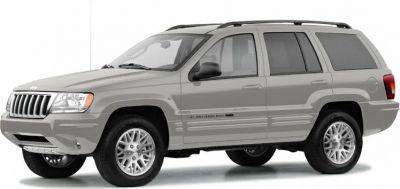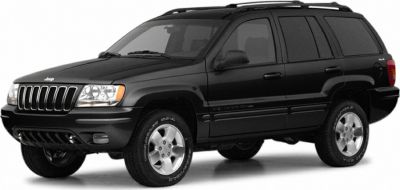 2006 Mitsubishi Pajero IV Dimensions, Size & Specs
2006 Mitsubishi Pajero IV Dimensions, Size & SpecsMeasurements of the 2006 Mitsubishi Pajero IV, engineered for optimal performance and comfort
| Dimensions | |
|---|---|
| Length: | 4385-4900 mm172.6-192.9 in14.4-16.1 ft |
| Width: | 1875 mm73.8 in6.2 ft |
| Height: | 1870 mm73.6 in6.1 ft |
| Trunk Capacity: | 215 liter7.6 cu ft |
| Trunk Capacity (Max): | 1790 liter63.2 cu ft |
| Weight Specifications | |
| Curb Weight: | 2035-2310 kg4486-5093 lbs |
| Maximal permitted Weight: | 2530-3030 kg5578-6680 lbs |
| Tire Specifications | |
| Rims Size: | 17-inch rims:
|
| Tire Size: |
|
The Mitsubishi Pajero IV, produced between 2006 and 2011, is a robust and spacious SUV designed to cater to both off-road enthusiasts and families seeking versatility and comfort. This fourth-generation Pajero features a variable length ranging from 4385 mm to 4900 mm (172.6 - 192.9 inches), a consistent width of 1875 mm (73.8 inches), and a height of 1870 mm (73.6 inches), offering a commanding presence on the road. With a curb weight between 2035 kg and 2310 kg (4487 - 5095 lbs) and a maximum weight capacity ranging from 2530 kg to 3030 kg (5579 - 6682 lbs), the Pajero IV is built for durability and heavy-duty usage. Its tire size is 265/65 R17 paired with 7.5J X 17 rims, providing stable handling and off-road capability. The interior luggage space offers 215 liters (7.6 cubic feet) with all rear seats in use, expanding impressively to 1790 liters (63.2 cubic feet) when the rear seats are folded down, making it ideal for transporting large loads or outdoor gear. This generation of the Pajero is recognized for combining rugged capability with practical space, making it a competitive choice in the SUV segment during its production period.
Discover the standout features that make the 2006 Mitsubishi Pajero IV a leader in its class
Have a question? Please check our knowledgebase first.
The Mitsubishi Pajero IV produced from 2006 to 2011 features a length ranging between 4385 mm to 4900 mm (approximately 172.6 to 192.9 inches). This length variation depends on the specific trim or body style variant offered within the generation. The extended length versions typically correspond to models with longer wheelbases or added third-row seating options, providing extra interior space for passengers or cargo. The base length of around 4385 mm (172.6 inches) places it comfortably within the mid-to-large SUV category, while the extended length variants at 4900 mm (192.9 inches) compete closer to larger SUVs. This range accommodates different user needs, from urban driving to increased passenger or cargo capacity without significantly affecting urban maneuverability.
The Mitsubishi Pajero IV has a width of 1875 mm, which is about 73.8 inches. This width is fairly standard for mid-to-large SUVs produced in the same era, offering a good balance between road presence and practicality. The width provides ample shoulder room for passengers inside and improves stability on the road, especially for off-road conditions the Pajero is renowned for. Compared to competitors in the midsize SUV segment, the Pajero is on par or slightly wider, helping contribute to its rugged stance and functional interior space. The 1875 mm width also typically allows the vehicle to fit through standard vehicular lanes comfortably, though it may require caution in very narrow urban conditions.
The height of the Mitsubishi Pajero IV is 1870 mm, or approximately 73.6 inches. This relatively tall stature benefits the vehicle in several ways. Firstly, it provides generous interior headroom, ensuring comfort for occupants regardless of seating row – especially helpful for taller passengers. Secondly, the elevated height contributes to better ground clearance, a critical feature for off-road driving, which the Pajero series is widely known for. The higher stance facilitates driving over uneven terrain, rocks, and rough surfaces without risking damage to the underbody. However, this height also means a higher center of gravity compared to sedans, which can impact cornering stability but is mitigated by the SUV’s suspension design and stability systems.
The Mitsubishi Pajero IV weighs between 2035 kg and 2310 kg (approximately 4488 to 5095 pounds) in curb weight depending on the specific model and configuration. This weight range reflects the solid build quality, full-time 4WD capabilities, and equipment load on the vehicle. The substantial curb weight supports durability and off-road toughness but also means the Pajero requires a powerful engine to maintain dynamic performance and acceptable fuel economy. Heavier weight affects acceleration and fuel consumption negatively, though the balance between robust chassis, engine tuning, and four-wheel-drive capabilities ensures reliable performance both on- and off-road. Owners can expect moderate fuel efficiency typical for SUVs of this size and era, balanced by excellent utility and ruggedness.
The maximum permissible weight for the Mitsubishi Pajero IV ranges from 2530 kg up to 3030 kg (around 5578 to 6682 pounds). This gross vehicle weight rating (GVWR) includes the curb weight plus passengers, cargo, and any accessories or modifications. Such a high maximum load capacity means the Pajero IV can handle significant weight, making it suitable for towing, carrying passengers, and heavy cargo – key reasons why it is popular among off-road enthusiasts and families. For practical purposes, this capacity allows owners to load considerable equipment, luggage, or even additional gear for outdoor trips without risking safety or durability.
The luggage space in the Mitsubishi Pajero IV offers 215 liters (about 7.6 cubic feet) of volume with all rear seats in place, allowing limited but sufficient cargo for everyday use such as groceries or small luggage. When the rear seats are folded down, the cargo capacity dramatically increases to 1790 liters (around 63.2 cubic feet), transforming the vehicle into a practical transport option for bulky items, camping gear, or larger shipments. This versatility in luggage space reflects the Pajero’s design focus on combining off-road utility with everyday usability, delivering ample room for family trips and extensive gear storage.
Yes, the Mitsubishi Pajero IV is equipped with 7.5J x 17 rims and 265/65 R17 tires, sizes that enhance its off-road and all-terrain performance. The 17-inch rims strike a good balance between durability and comfort, while the 265 mm tire width (approximately 10.4 inches) provides solid traction on a variety of surfaces, including dirt, gravel, and mud. The 65 aspect ratio indicates a relatively tall tire sidewall, which is beneficial for absorbing impacts from rough terrains and helps maintain grip on uneven surfaces. These tire specifications contribute significantly to the Pajero's reputation as a capable and reliable SUV for both on-road comfort and off-road adventures.
The Mojave Pajero IV, measuring between 4385 mm and 4900 mm (172.6 to 192.9 inches) in length, 1875 mm (73.8 inches) in width, and 1870 mm (73.6 inches) in height, generally fits into a standard home garage commonly sized around 2.4 to 3 meters (8 to 10 feet) wide and 5.4 to 6 meters (18 to 20 feet) deep. While the width and height comfortably fit within these dimensions, the length, especially at the longer end of 4900 mm (nearly 16 feet), requires a garage with sufficient depth. Most modern garages can accommodate these dimensions but maneuvering may be tighter compared to smaller vehicles. Homeowners should ensure at least 6 meters (20 feet) garage depth to park the Pajero IV confidently while allowing room for opening doors and storage.
Compared to its predecessor, the Mitsubishi Pajero III, the Pajero IV generally offers an increase in length and weight, reflecting enhancements in luxury, safety, and off-road technology. The Pajero IV's length ranges from 4385 mm to 4900 mm, which may be longer than the Pajero III's typical length dimensions, allowing for improved interior space, better passenger comfort, and increased cargo capacity. The width remains comparably spacious at 1875 mm, maintaining good stability and road presence. Moreover, the Pajero IV introduced more modern features such as improved suspension, advanced 4WD systems, and updated styling. These changes positioned the Pajero IV as a more refined, capable, and comfortable vehicle while retaining the rugged off-road capability the model is known for.
In comparison to similar SUVs from the mid-2000s to early 2010s, such as the Toyota Land Cruiser Prado or Nissan Patrol, the Mitsubishi Pajero IV holds its own with a competitive length range (4385-4900 mm), width of 1875 mm, and strong off-road credentials. Its weight of 2035 to 2310 kg also places it in the same category, ensuring similar durability and toughness. While some rivals may offer slightly larger cabin or cargo space, the Pajero IV is noted for its blend of size, off-road technology, and Japanese reliability. Its capable 4WD system and respectable ground clearance make it a favored choice for buyers seeking a balance of daily usability and serious off-road performance.
Discover similar sized cars.

| Production: | 2003-2004 |
|---|---|
| Model Year: | 2004 |
| Length: | 4611 mm181.5 in |
| Width: | 2180 mm85.8 in |
| Height: | 1786-1805 mm70.3-71.1 in |

| Production: | 1998-2003 |
|---|---|
| Model Year: | 1999 |
| Length: | 4613 mm181.6 in |
| Width: | 2180 mm85.8 in |
| Height: | 1762-1805 mm69.4-71.1 in |

| Production: | 2006-2009 |
|---|---|
| Model Year: | 2006 |
| Length: | 4590 mm180.7 in |
| Width: | 1865 mm73.4 in |
| Height: | 1730-1811 mm68.1-71.3 in |

| Production: | 2007-2011 |
|---|---|
| Model Year: | 2007 |
| Length: | 4544-4584 mm178.9-180.5 in |
| Width: | 1857 mm73.1 in |
| Height: | 1755-1778 mm69.1-70.0 in |
